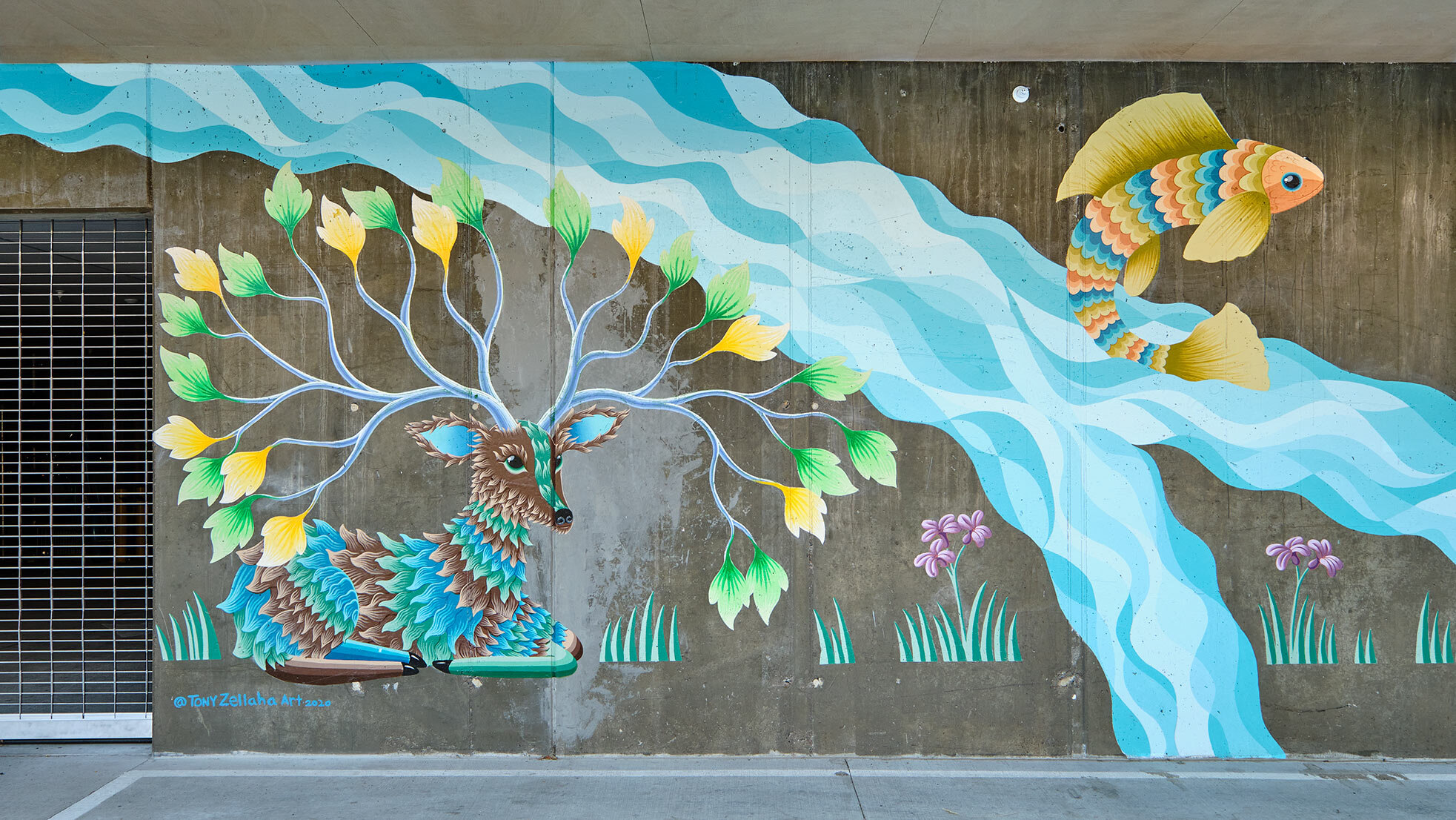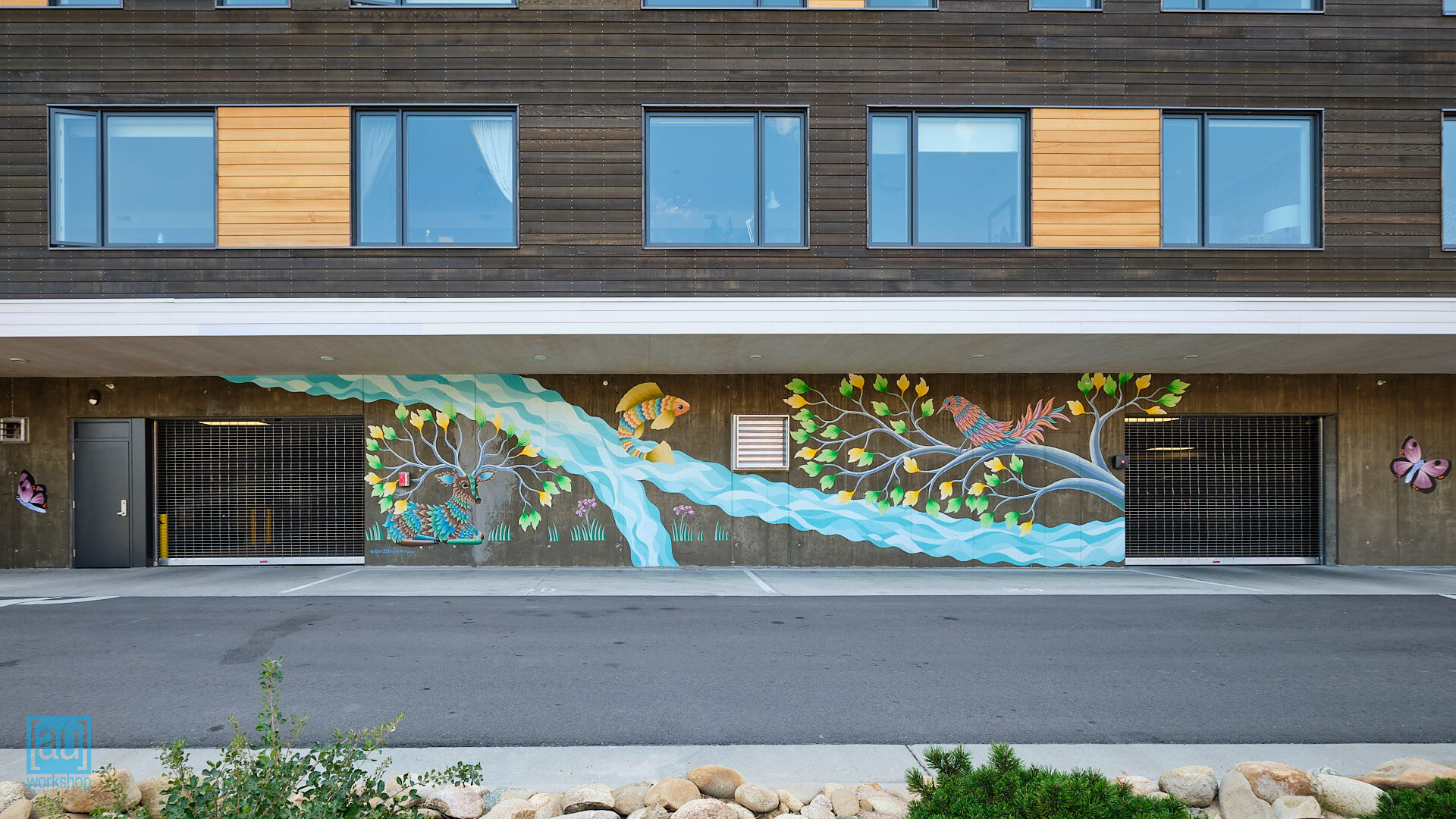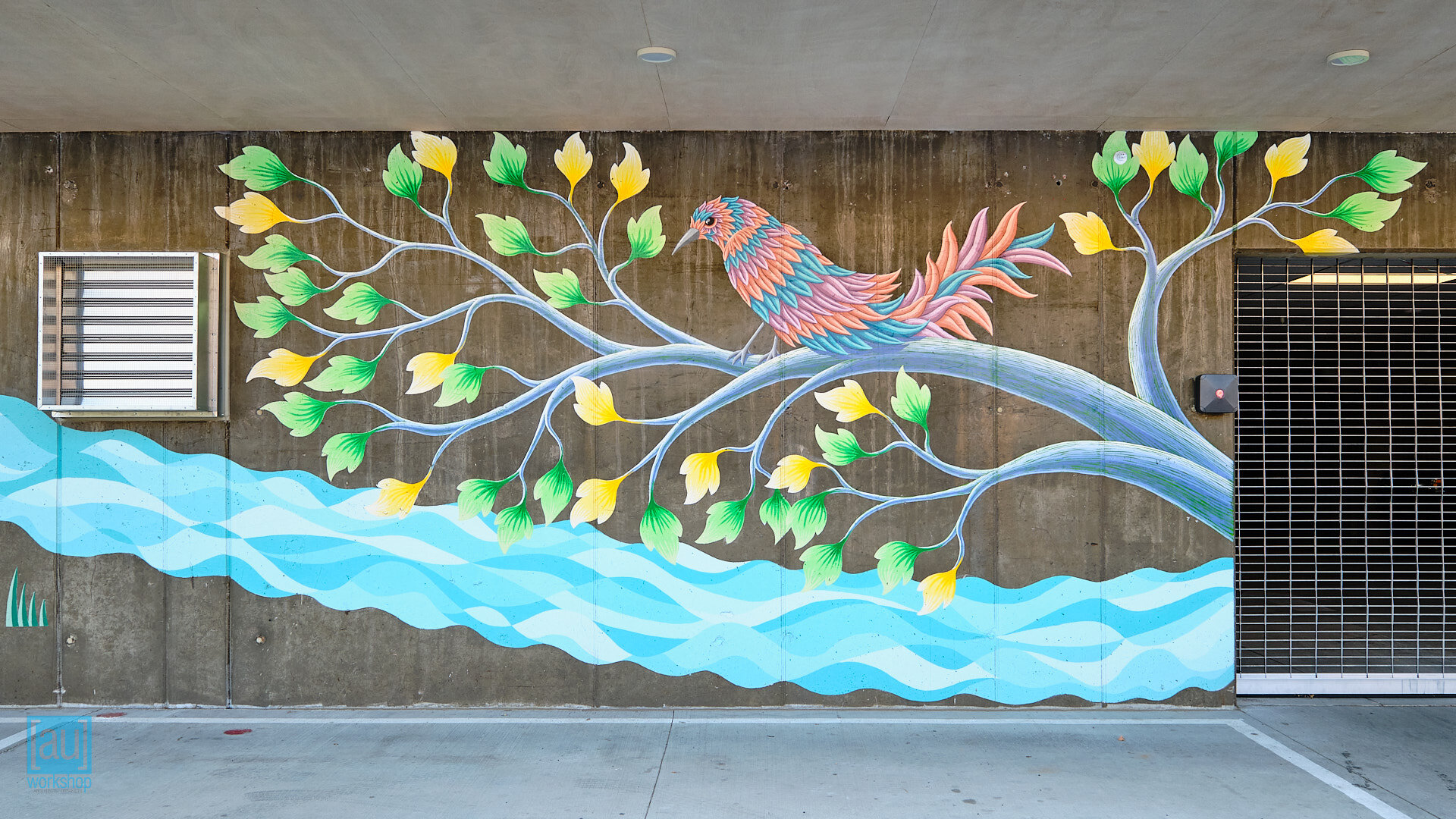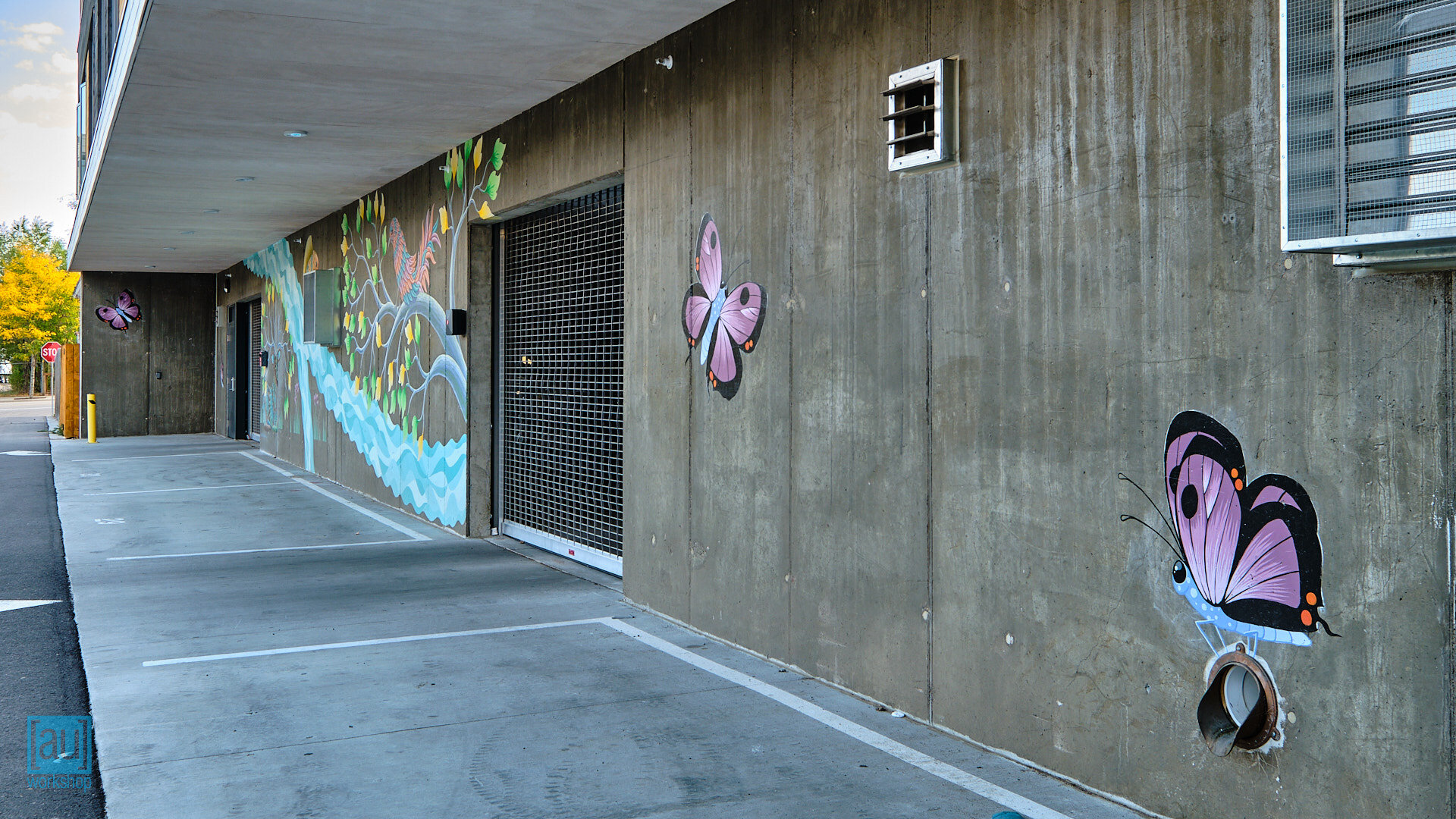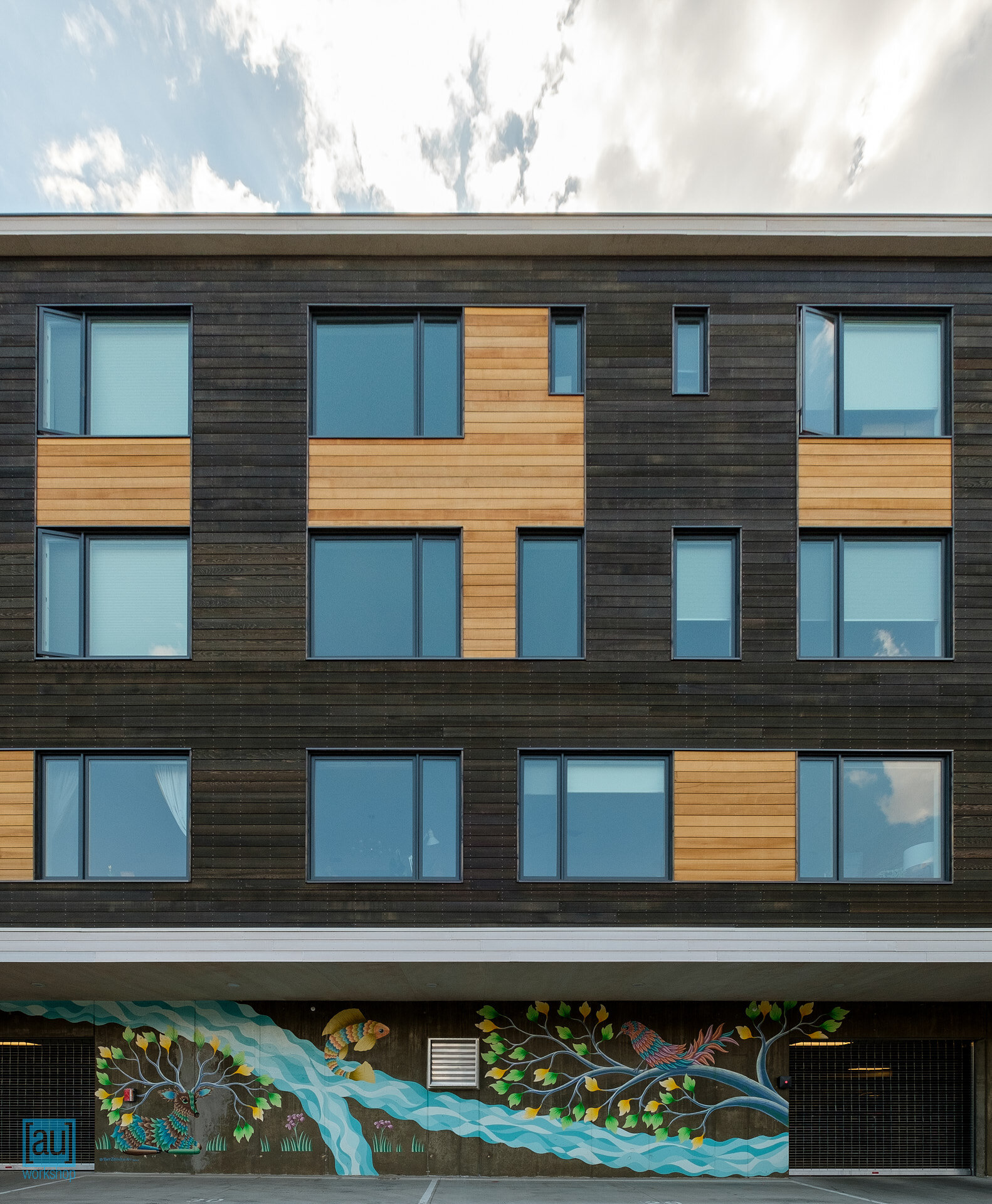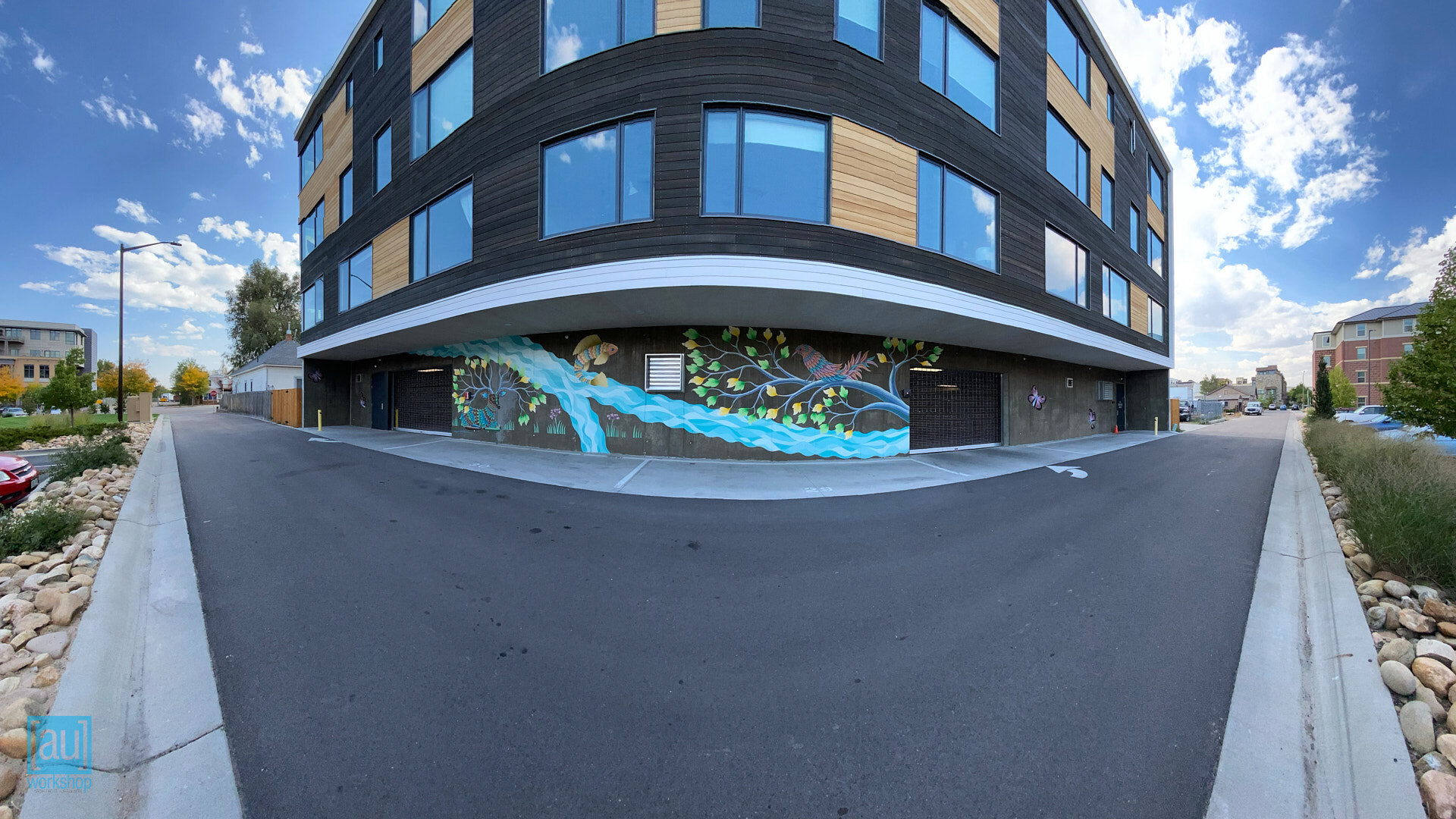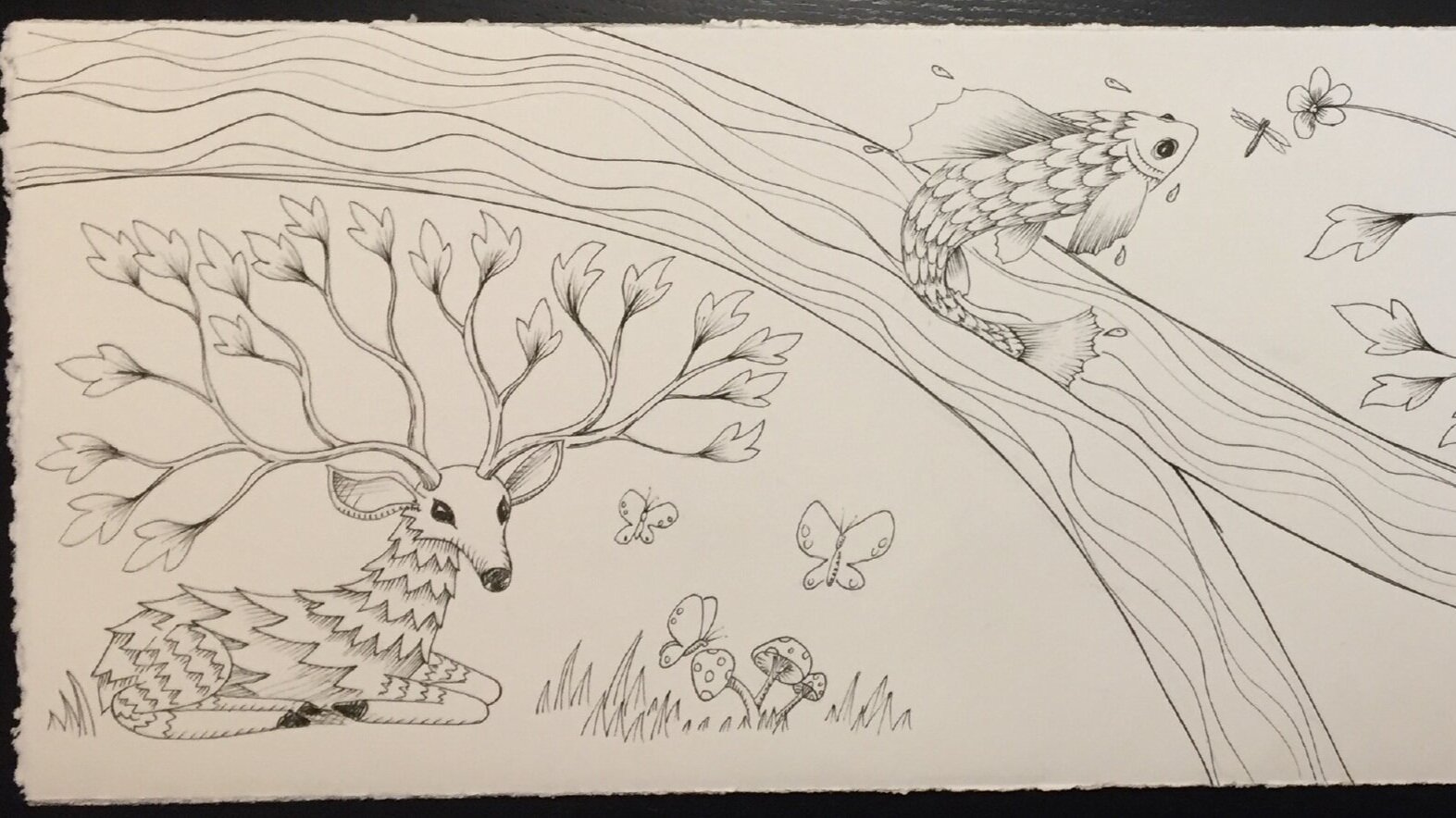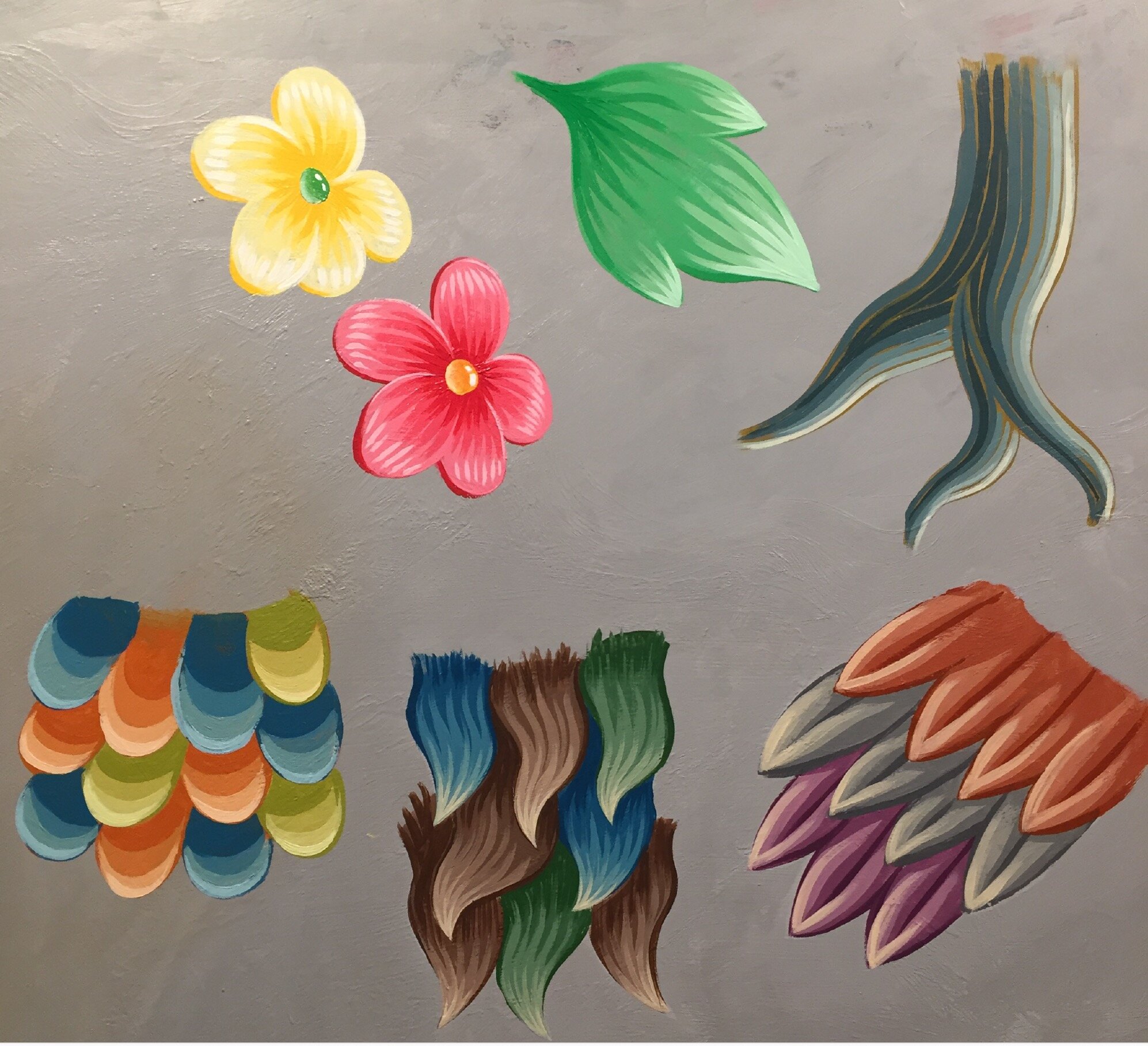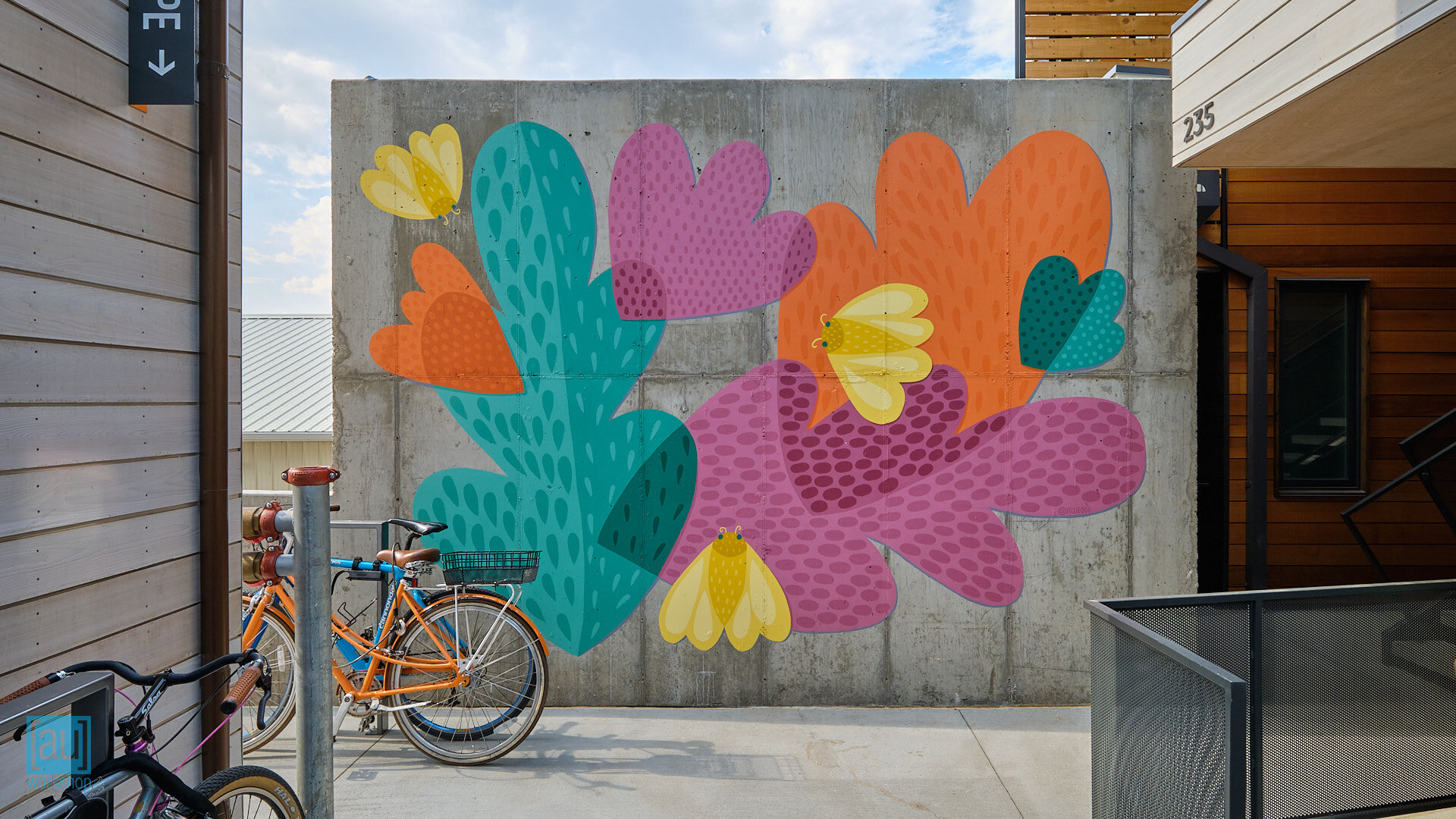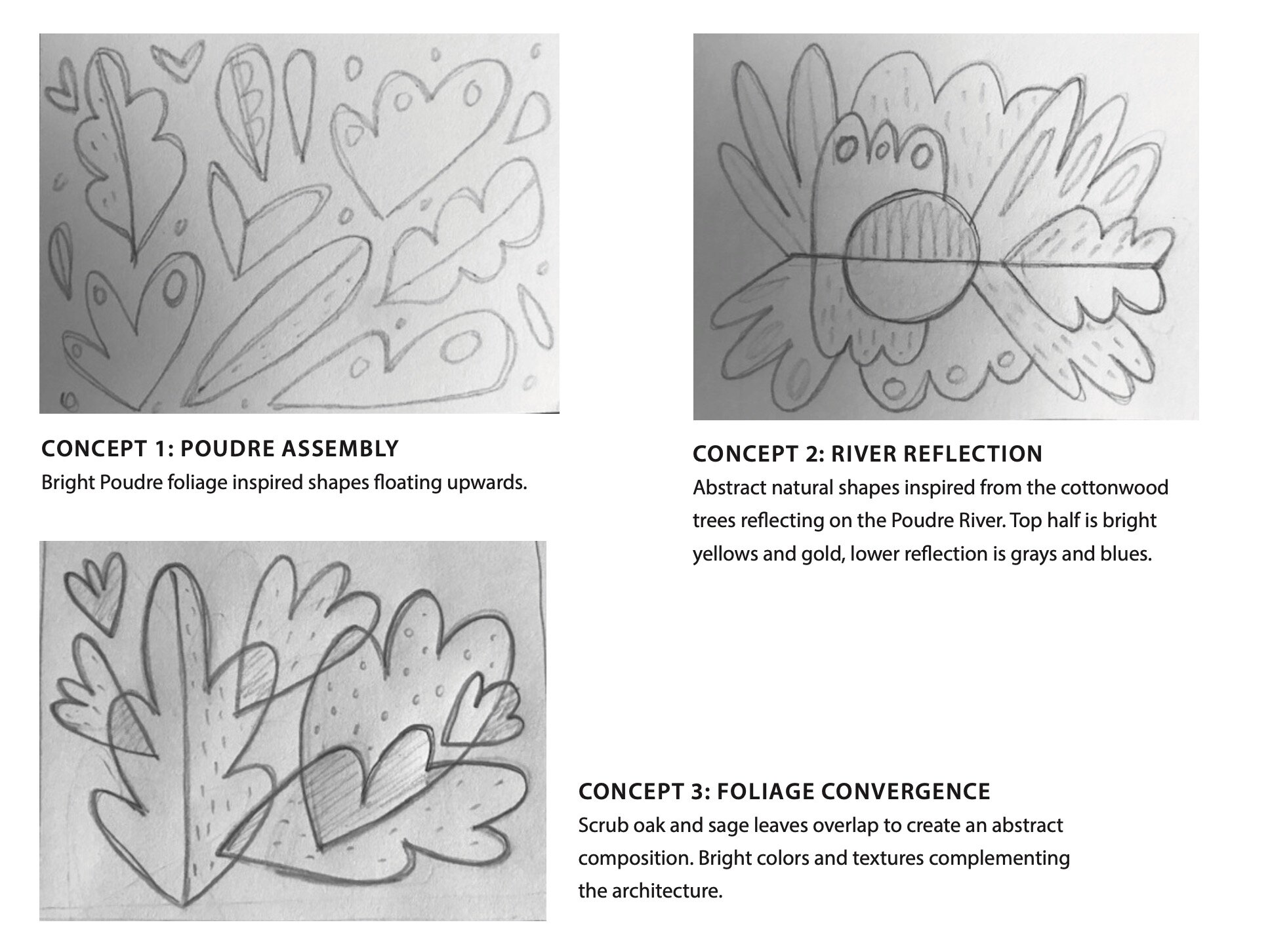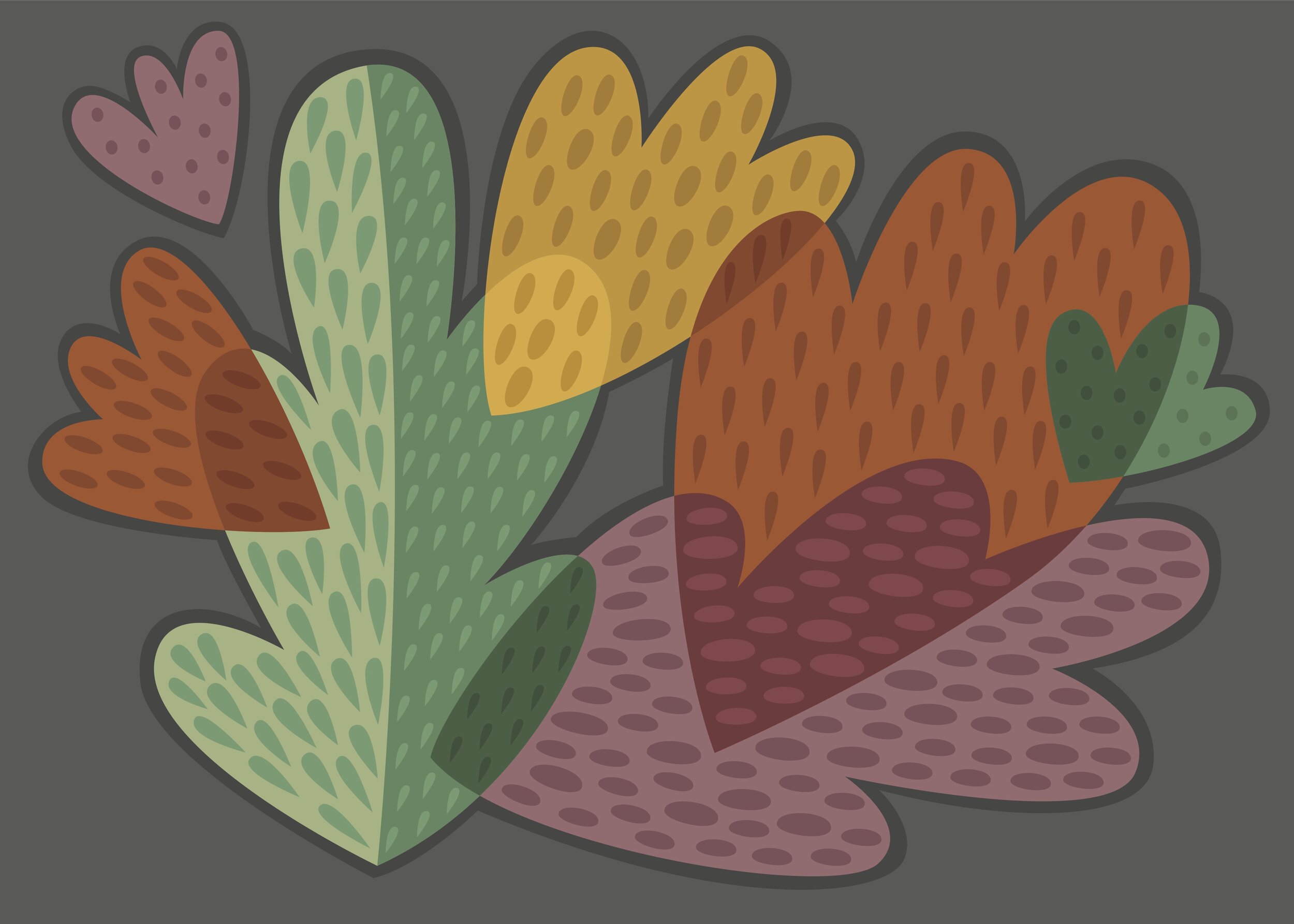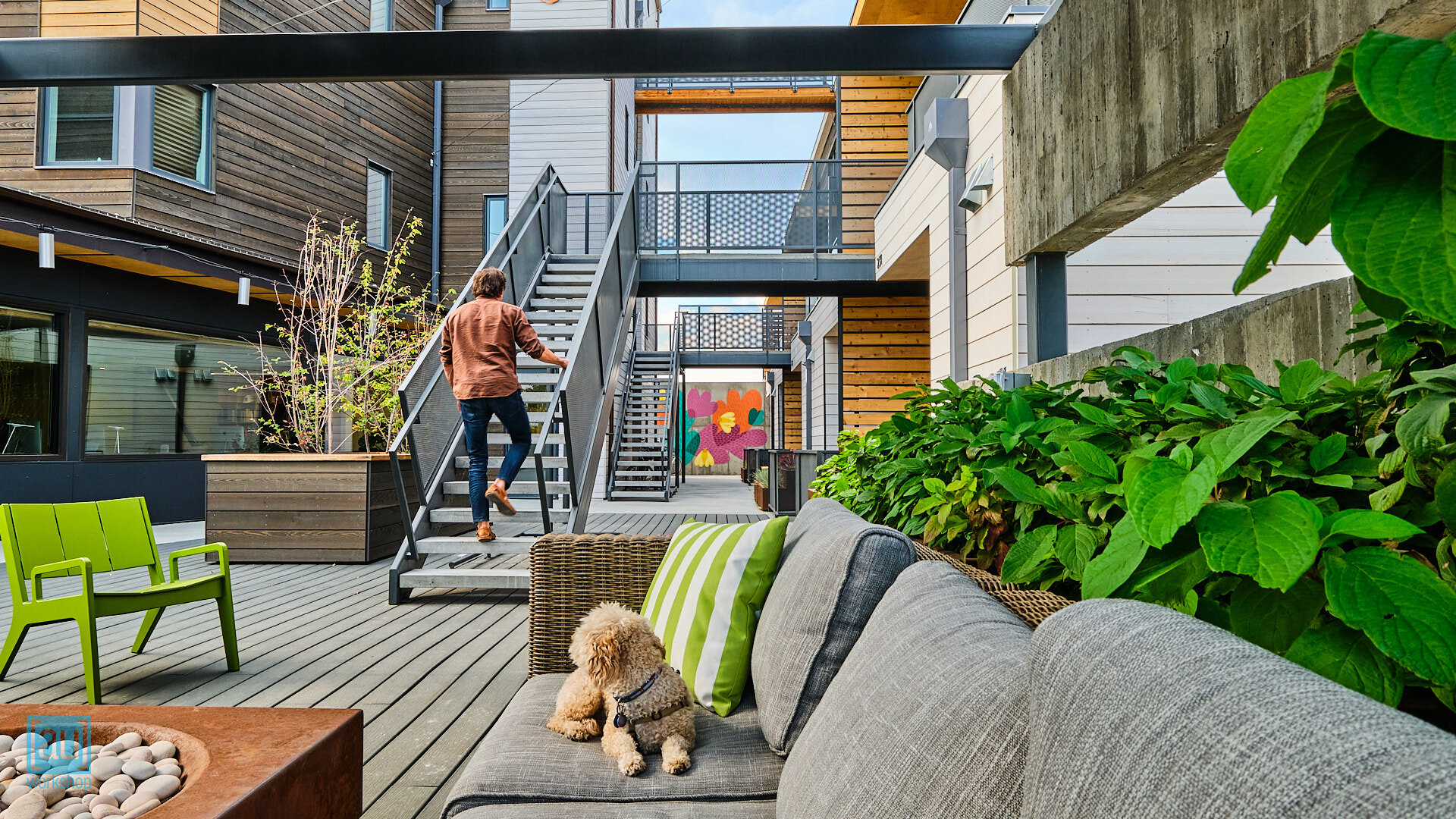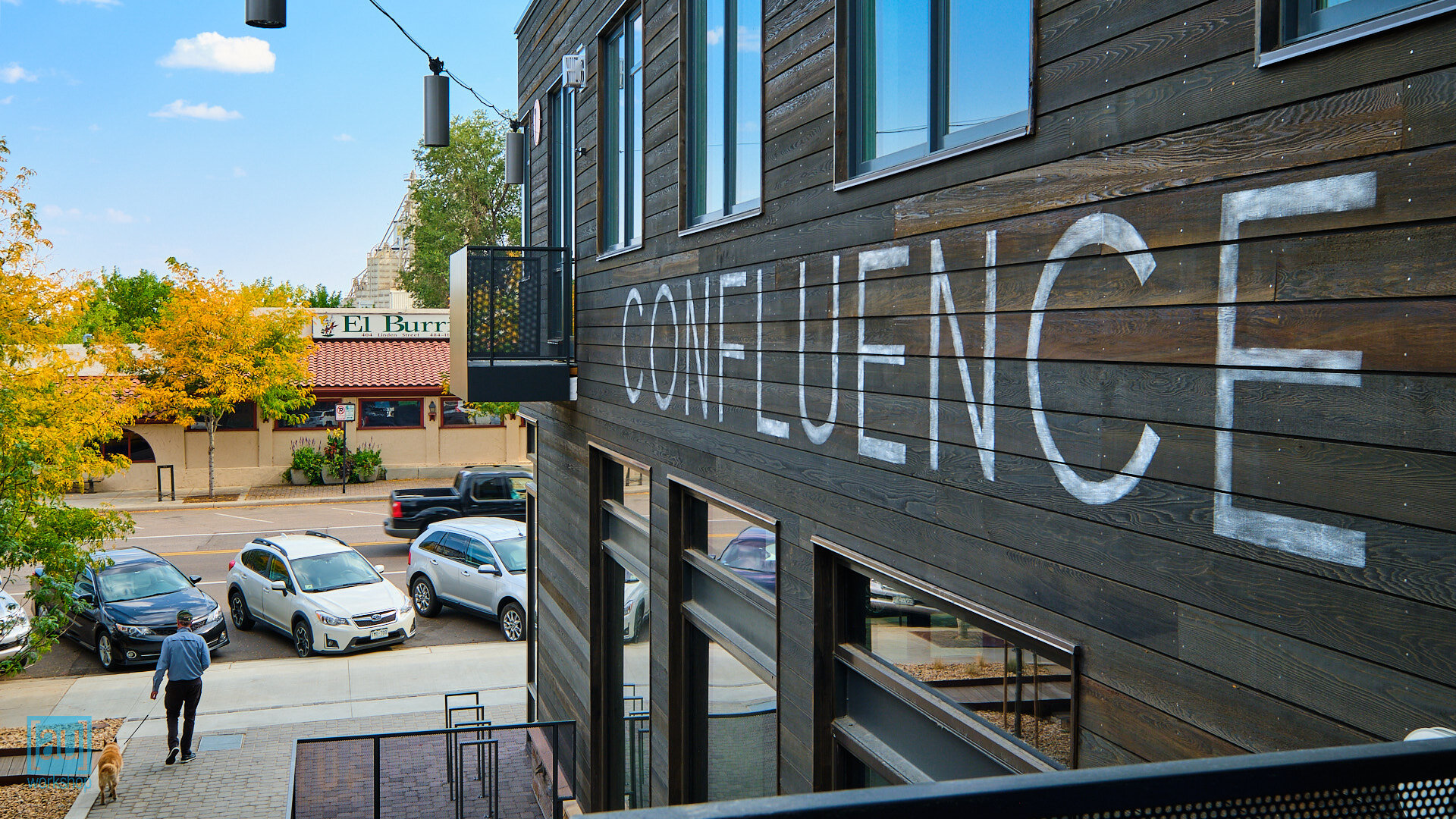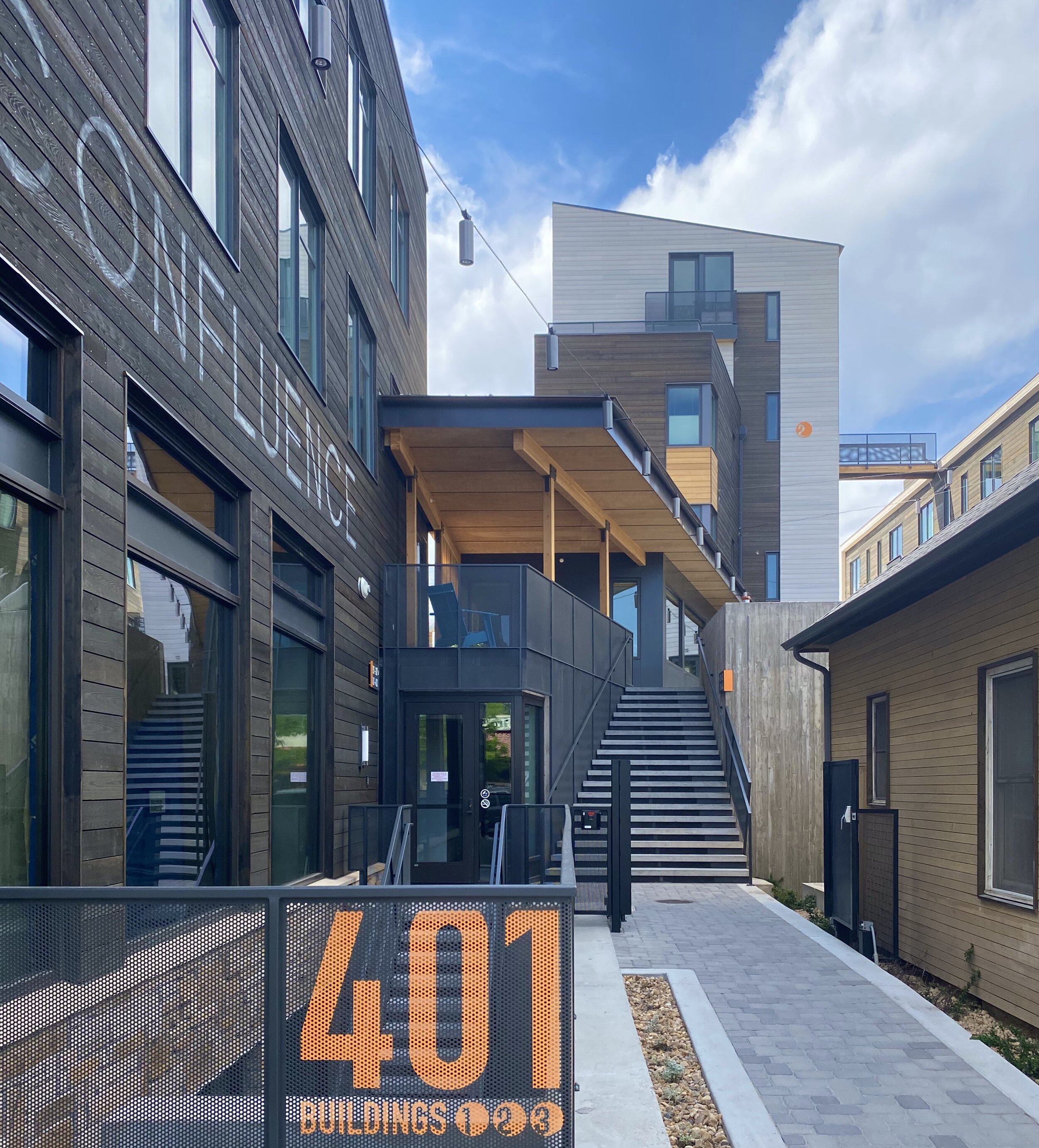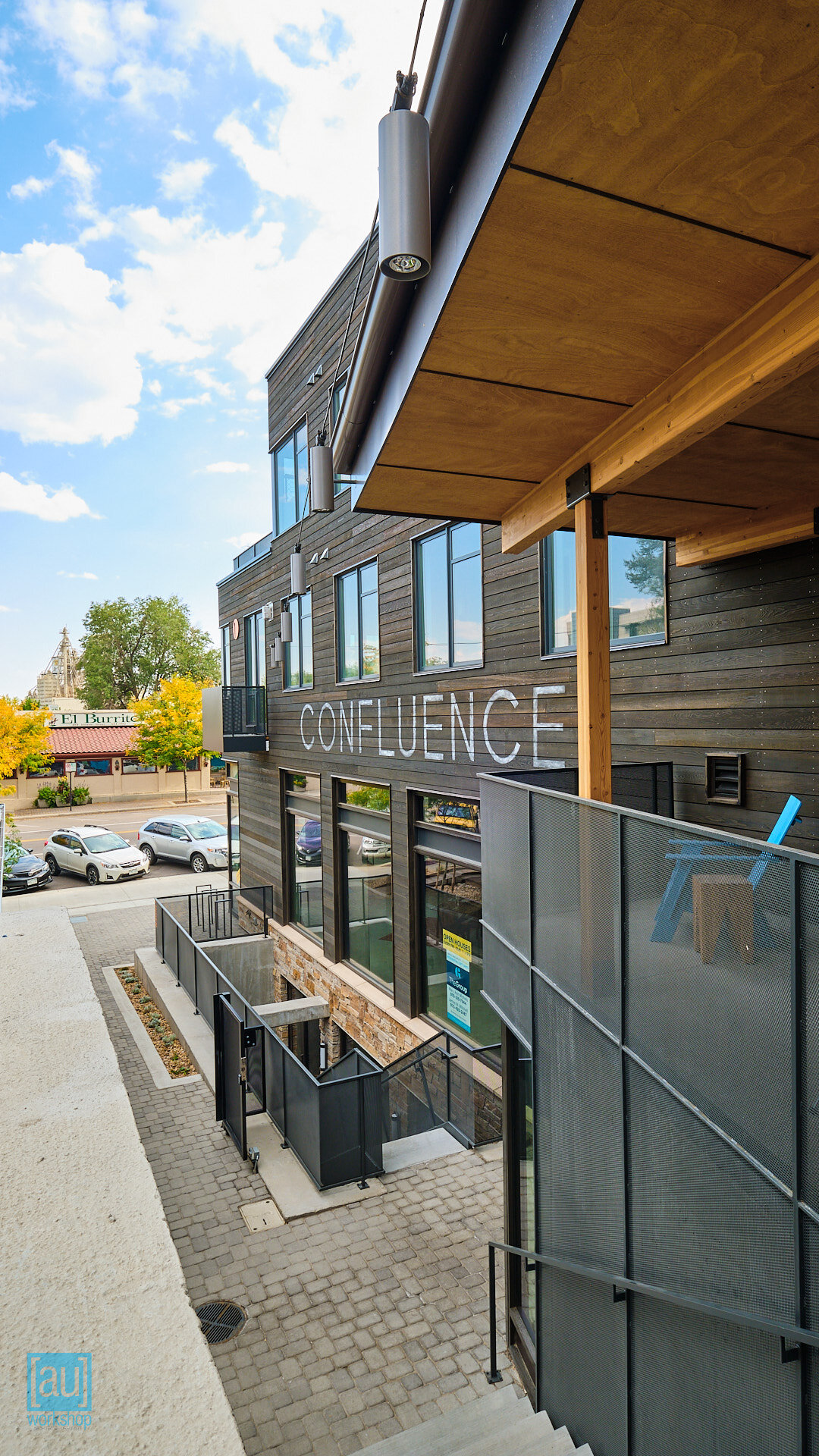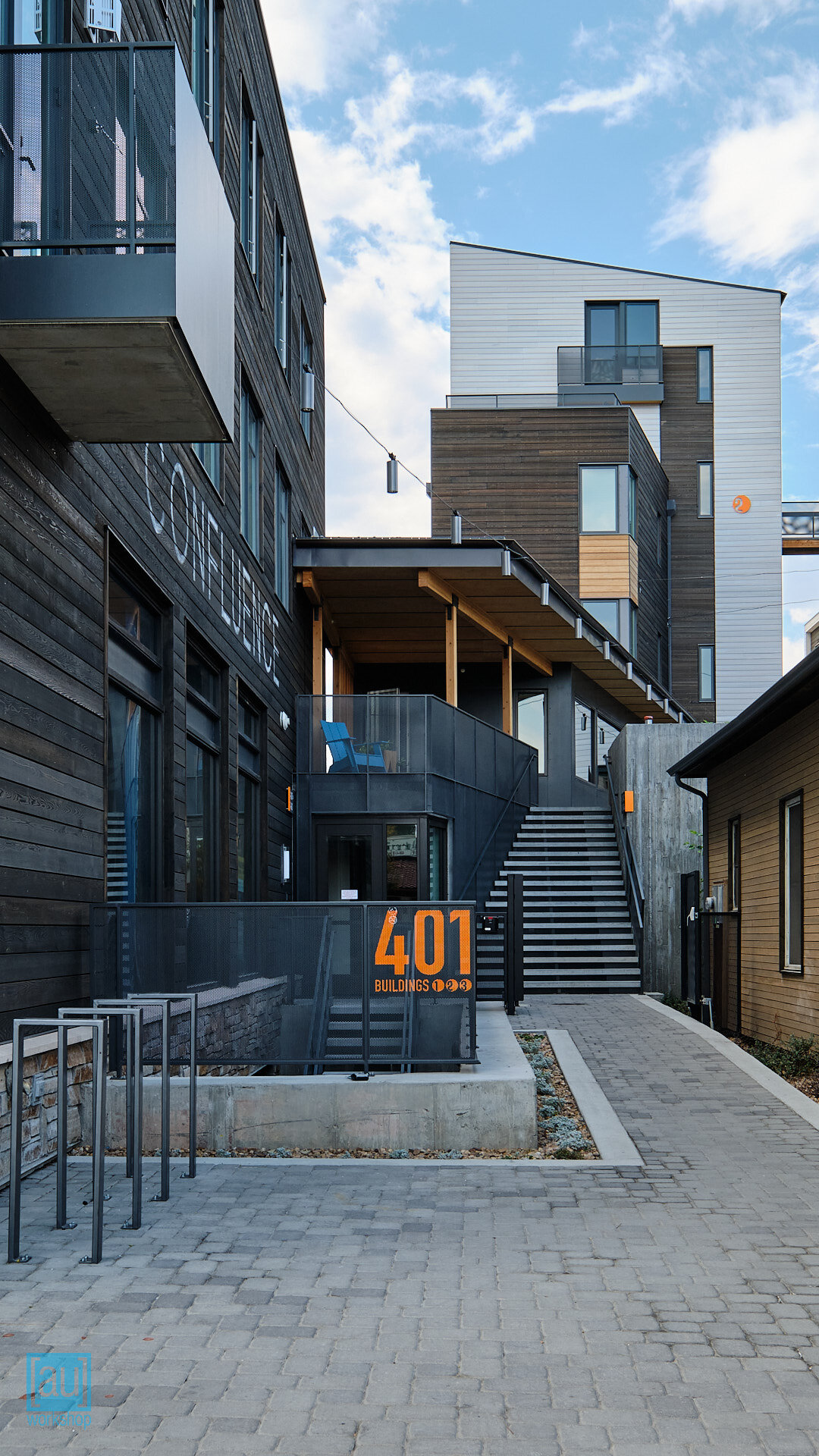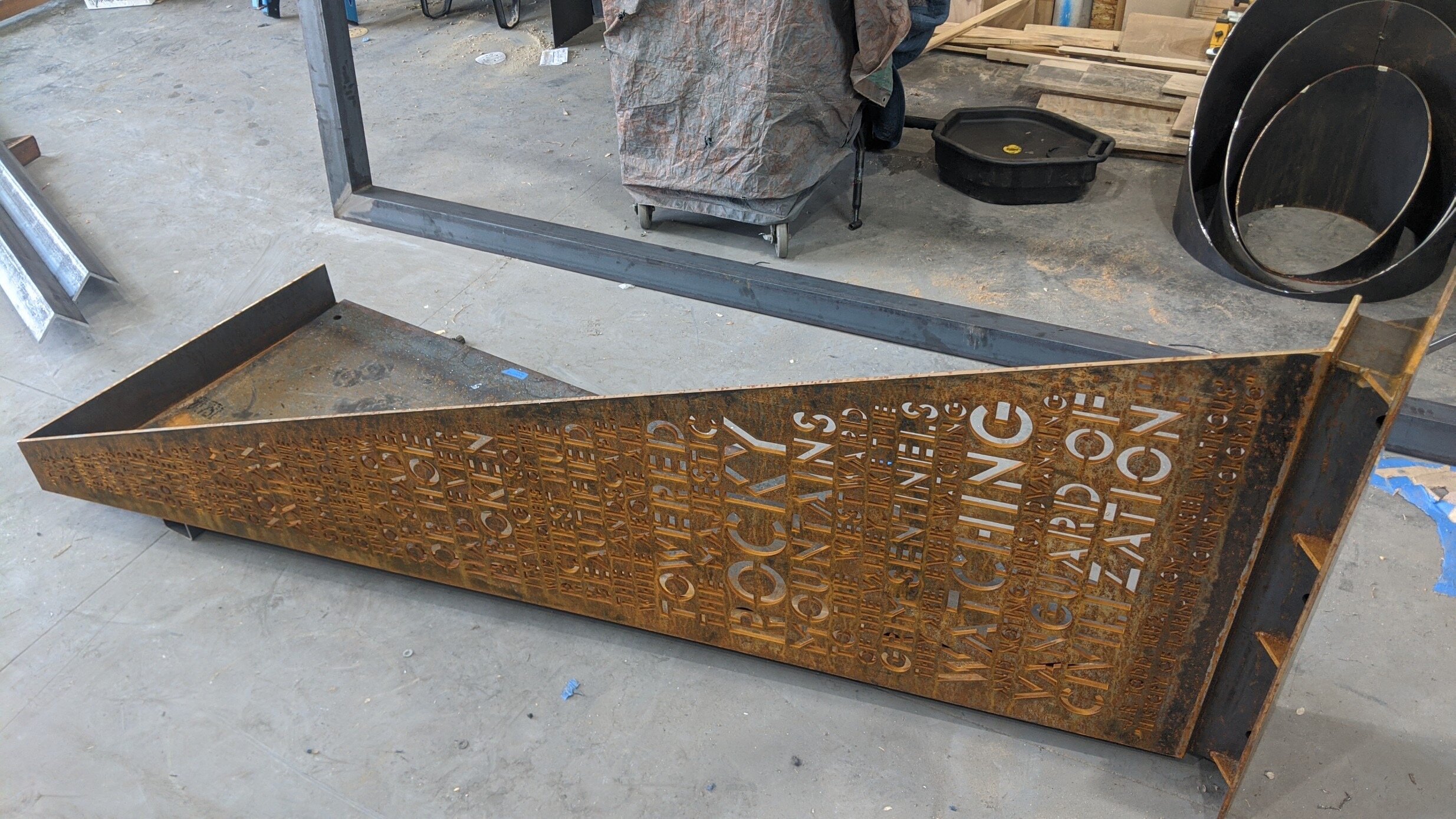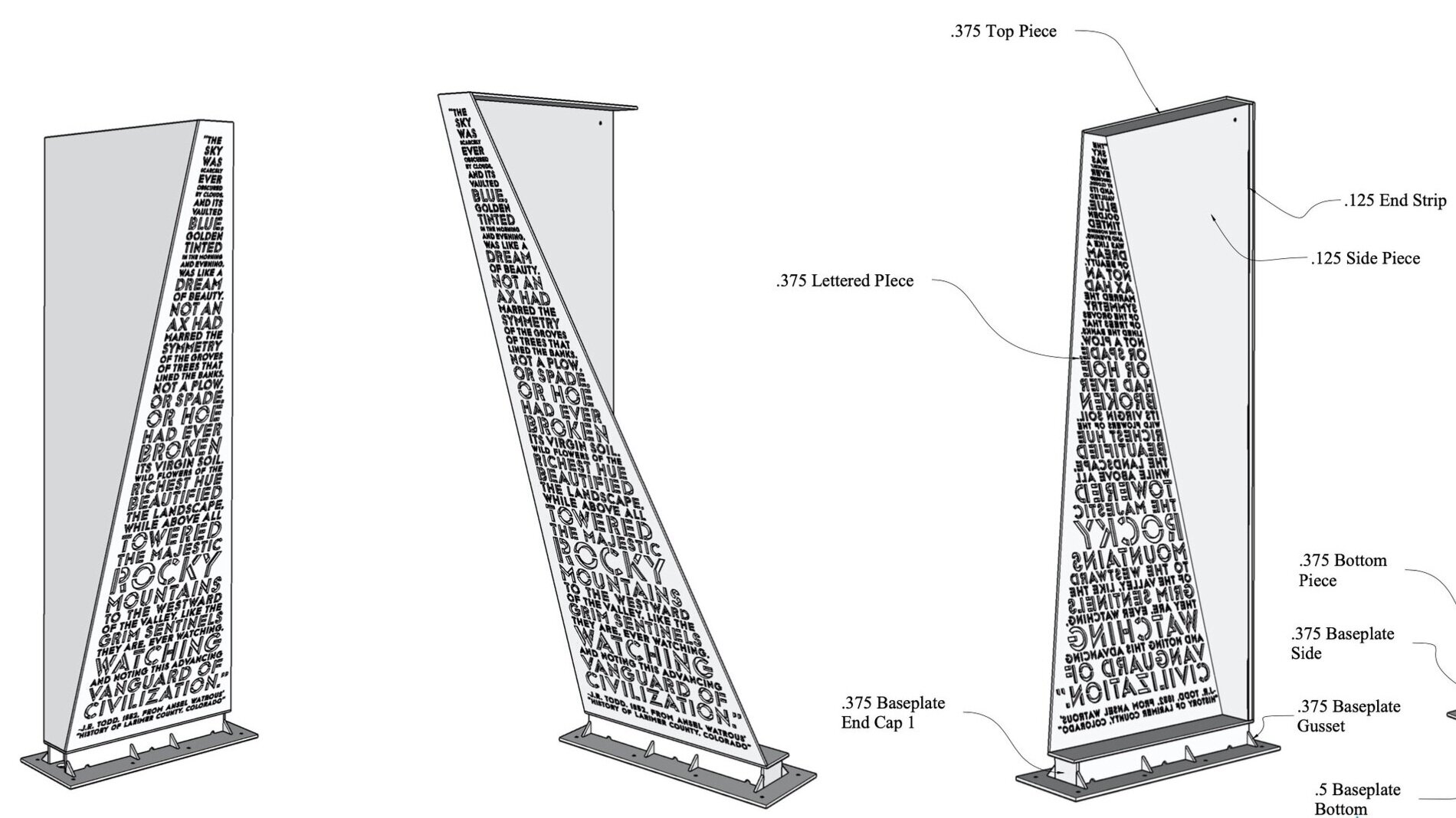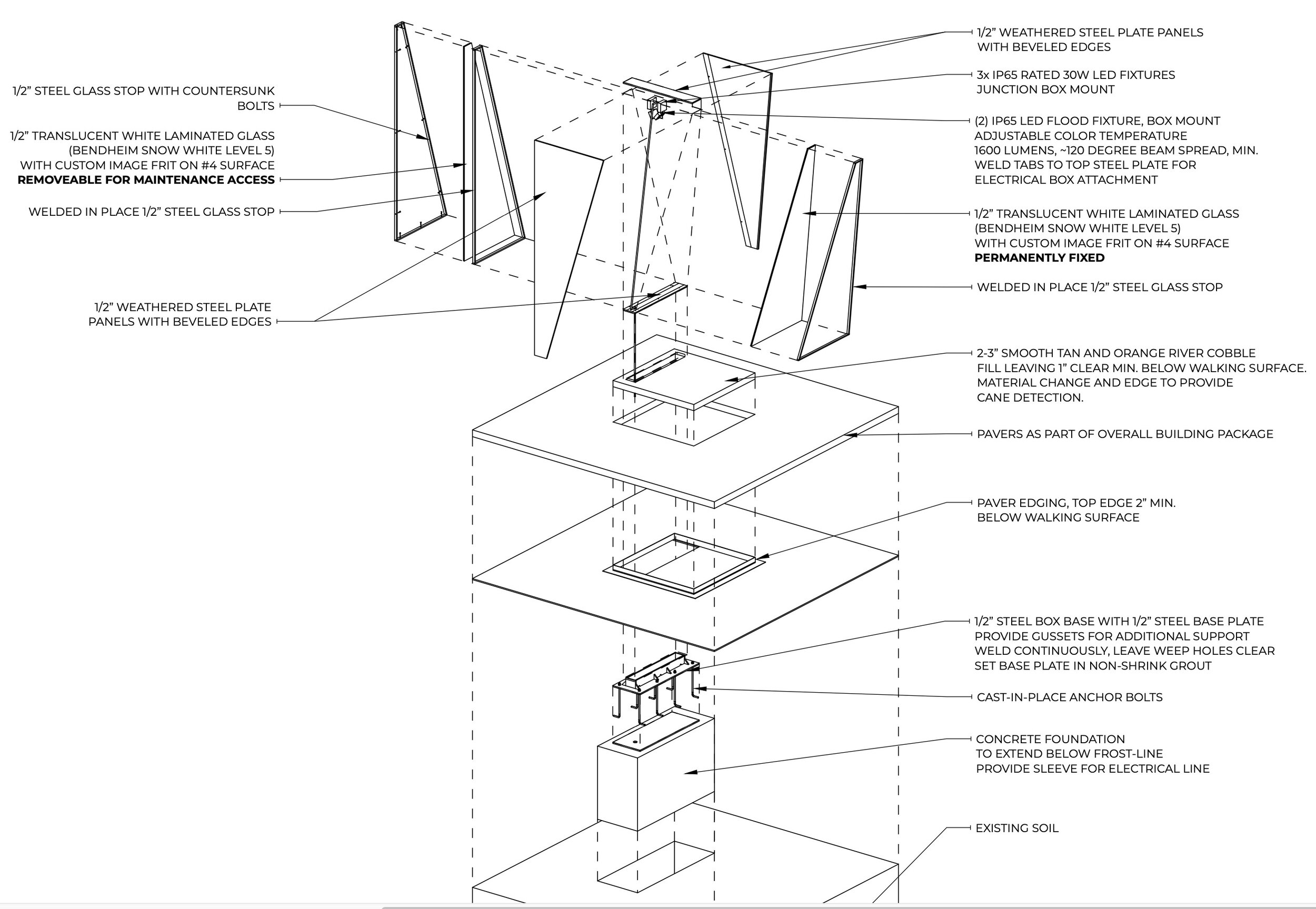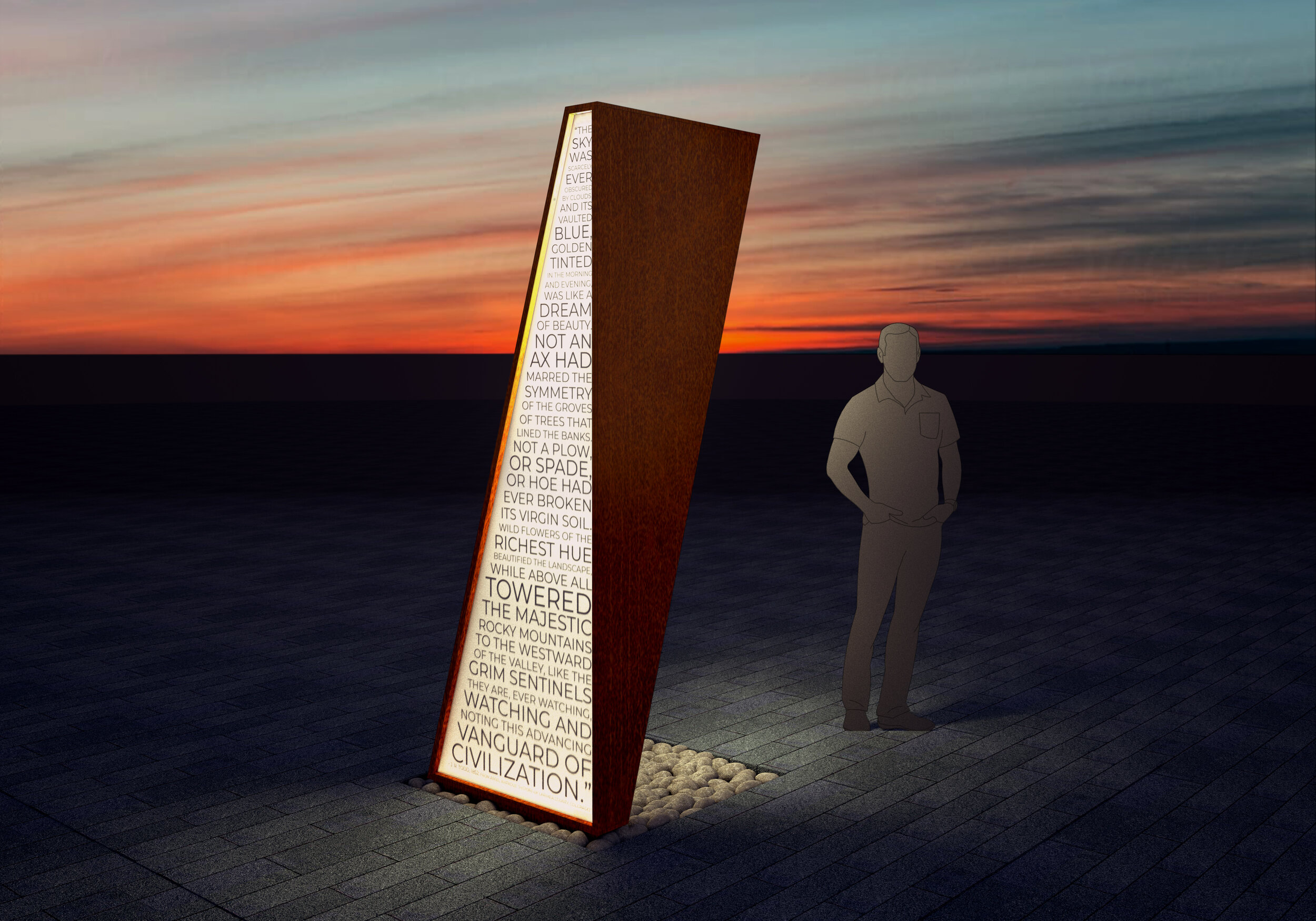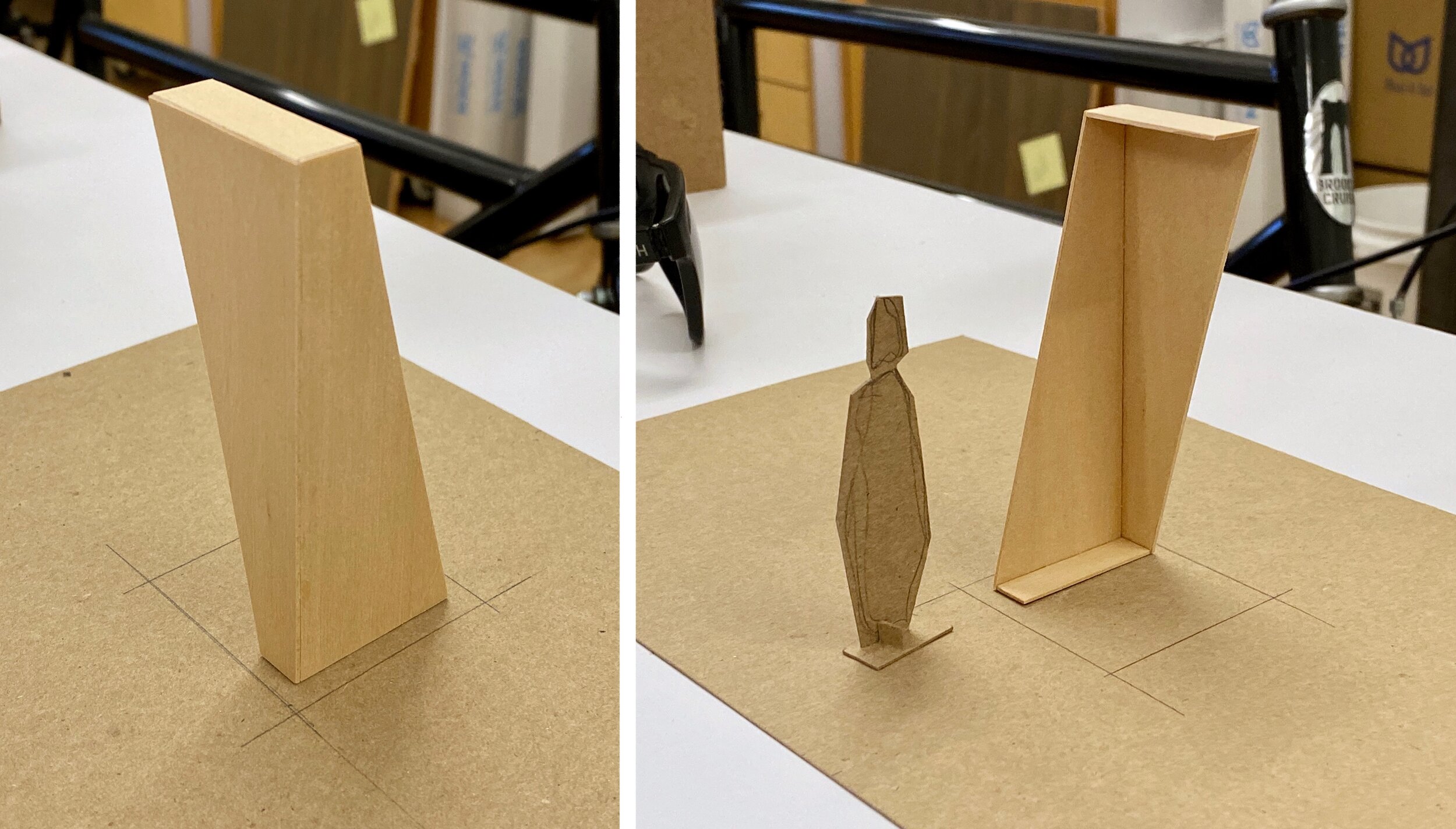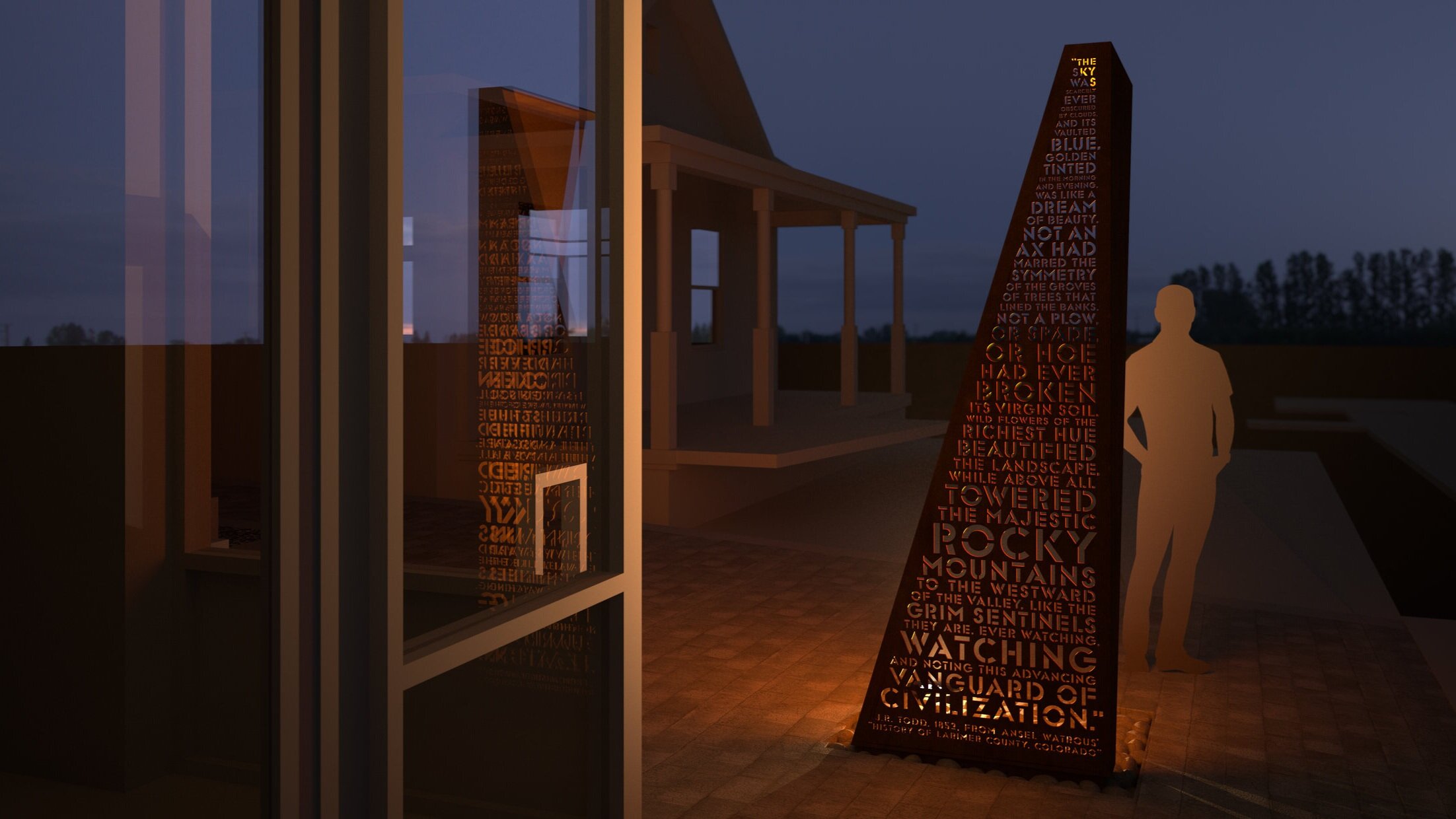A Confluence of Art - The Exterior
EXTERIOR MURALS, GRAPHIC DESIGN, AND SCULPTURES
In the last of our three posts on local artwork within and surrounding the project, we are examining the murals and sculptures on the exterior of the project. See parts one and two for more information on Willow Street Plaza and the building interior.
For residential and commercial unit availability, please see confluencefc.com. All of the works below are freely accessible during the day, so please be sure to come visit in person!
Untitled, Tony Zellaha, Color Pusher: Making Art + murals + paintings + illustrations + chalkart in Denver, Colorado
Paint on concrete
This one-hundred-foot-long mural stretches along the Poudre Street garage wall, brightening an otherwise blank area with imagined plants, fish and animals that inhabit the confluence of two rivers.
Contracted through Nine Dot Arts
“Zellaha’s signature fine lines of gradually shifting colors give an otherworldly depth to each element, while the texture of the concrete is allowed to shine through.”
Untitled, Allie Ogg, Illustrator, Designer & Maker
Paint on concrete
A confluence of colorful leaves and moths provide a long-axis focal point and a splash of color to the courtyard, while preserving the raw texture of the bare concrete.
[au]workshop worked directly with Allie to choose from several concepts relating to the nearby river, and to explore how the work would engage with the concrete surface of the second level courtyard wall.
See additional process images and a time-lapse video of the painting in the gallery below.
“The overlapping colors produce multiple layers of depth ala Rowe and Slutzky’s ‘phenomenal’ transparency, with literally transparent portions allowing the texture of the raw concrete to shine through.”
Confluence Ghost Sign and project directional signage, [au]workshop architects + urbanists, painted by Daniel Crosier
Paint wash on cedar siding, paint on steel
The “weathered” project name sign in the Confluence Entry Court echoes the historic “ghost signs” of downtown that have faded with time, with the hope that age will bring additional patina and character to the piece. After a series of experiments to determine the appropriate technique and final location, Daniel Crosier executed the final piece.
The entry is also highlighted by brightly colored address and directional signs designed by [au]workshop.
““Signs are social. They identify, direct, and decorate.
In a world full of uniform and unimaginative
advertising, ‘ghost signs’ contain the originality and
history that others lack. “”
Untitled, [au]workshop architects + urbanists (to be installed Fall, 2020)
Waterjet-cut weathering steel sculpture with integrated downlighting. [au]workshop went through many iterations of the design to arrive at the final piece.
The text describes the impressions one of the Poudre River Valley’s early anglo-european visitors. Ansel Watrous’ (a local historian) 1911 book, “History of Larimer County, Colorado” includes excerpts of a letter sent in 1852 by one J.R. Todd, who was moving west from Iowa. Ansel Watrous’ own writing tends to be somewhat dry and pragmatic, but Todd is expansive on the beauty of the Cache la Poudre river basin:
Speaking directly to the beauty of the river banks, as well as to its relationship with ongoing human development, this passage invites visitors to ponder their place in our shared history.
Fabrication by Hueber Industries
Additional funding by the Fort Collins Downtown Development Authority; the sculpture is sited within a public easement in the Confluence Entry Court.
““Its waters were full of trout of the speckled or mountain variety. The undulating bluffs sloped gently to the valley which was carpeted with the most luxuriant grasses. It was in June, the mildest and most beautiful part of the summer in the western country, when the days were pleasant, the nights cool and mornings crisp and bracing. The sky was scarcely ever obscured by clouds, and its vaulted blue, golden tinted in the morning and evening, was like a dream of beauty. Not an ax had marred the symmetry of the groves of trees that lined the banks. Not a plow, or spade, or hoe had ever broken its virgin soil. Wild flowers of the richest hue beautified the landscape, while above all towered the majestic Rocky Mountains to the westward of the valley, like the grim sentinels they are, ever watching, watching and noting this advancing vanguard of civilization.””
![[au]workshop: Architects + Urbanists](http://images.squarespace-cdn.com/content/v1/5116772ce4b0a31c035e701a/1485294861983-QVVSFP64I0OD7HTADAA6/170123_solid+transparent_Base+solid+transparent.png?format=original)
